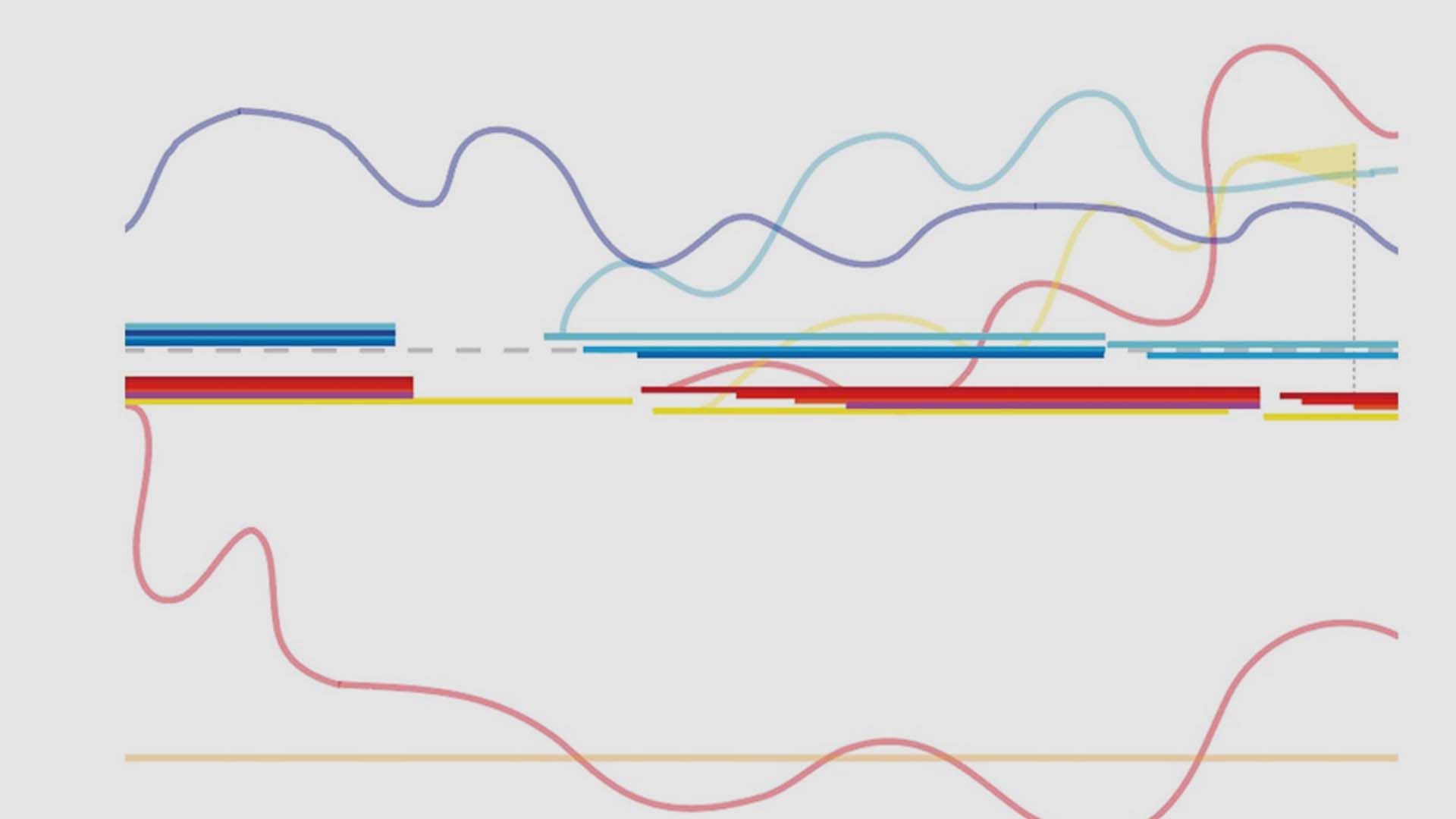
Courtesy of the artist.
To quell the violence on the frontiers of early Australia, to reduce devastation by disease and to provide Aborigines with a ‘humane’ environment while their race died out, colonial governments introduced systems of ‘protective’ legislation. The first was in 1860 in South Australia, where a Chief Protector was appointed to ‘smooth the dying pillow’. By designating territory for Aborigines, it was hoped that the conflict between settlers and Aborigines would stop, and that Aborigines would use the settlement land to farm and become self-sufficient, thus improving their ‘destitute’ state. This piece features text in the background that has been taken from documents in the National Library of Australia. To perform this work, you can use the video as the score. Each player is assigned a colour. A smooth flat line indicates a soft dynamic, and the widening of the line means getting louder. Use a bow to play the cymbal and try as where possible to make the bow change inaudible. A ‘dot’ at the end or start of a line means to articulate the start or end in some strong way, if there is no dot you should ease in at the start and let the cymbal ring out at the end. Floating ‘dots’ are soft cymbal strikes that can ring out. These can be on the cymbals being bowed, or on others – crotales or any other type of ‘cymbal like’ instrument.
